| |
Mountain Pine Beetle on the Farm | |
| |
|
|
| |
|
|
| |
Description | Control and Management | What can you do? | More Information
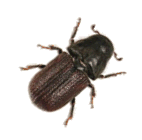 | Mountain pine beetle (MPB) has been in Alberta since early 2000 starting in the Peace River region and spreading north, and now in central Alberta. Farmers, ranchers and woodlot owners in central Alberta need to watch their trees for signs of attack. Your help is needed to prevent its spreading east. |
Description
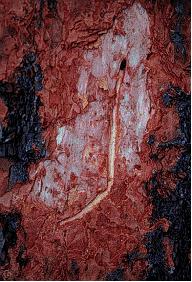 | MPB is a tiny black bark-boring beetle. The beetles favor Lodgepole Pine but they also attack Jack, Ponderosa and Scots pine. Beetles prefer to feed on older pine trees around 80 years of age with a 20 – 25 cm diameter, but during outbreaks they sometimes attack younger, smaller pines in our yards, shelterbelts and woodlots.
Adults take flight in late summer to hunt for suitable host trees. Upon landing they bore under the bark and form J-shaped galleries. This is where courtship takes place, eggs are laid and larvae feed and mature. |
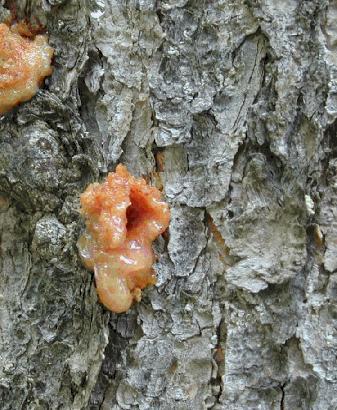 | One of the best indicators a tree has been attacked is the presence of creamy colored globs or “pitch tubes” that appear on the trunks where the beetle entered. Other signs include sawdust around the base of the tree, change in tree needle color from yellow to red as well as J-shaped galleries under the bark. |
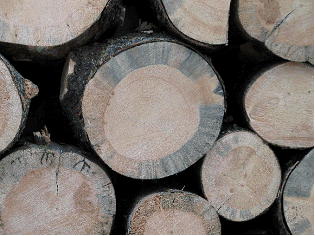 | Amazingly it is not the beetle that kills the tree but in fact a blue stain fungus that they carry which infects the tree. This fungus begins to spread throughout the sapwood and restricts sap movement and eventually chokes and kills the pine. Larvae will also contribute to tree death since they basically girdle the tree by lateral feeding.
Infested trees often die unless they are infested with only one or two hits since there are not enough beetles to overwhelm tree defenses and allow beetle reproduction to occur. |
Control and Management
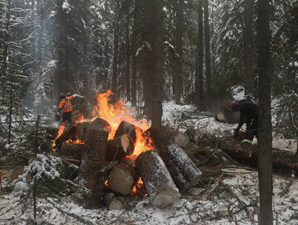 | The best control of MPB is to cut and burn the entire tree. High quality trees can sometimes be sold to local mills following rules of transportation of MPB infested wood or processed by a local sawmill owner as long as all the bark is removed and debris is burned. This is important because unburned debris may still contain live MPBs that could infest more trees. Processing this timber is a great option for woodlot owners who would like to recover some of the tree’s value. It is also suggested that landowners replace their trees with saplings (pine or spruce) purchased from a local nursery. |
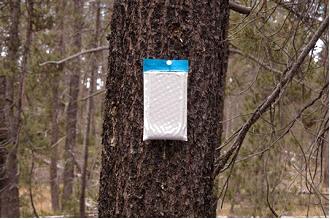 | Prevention from the attack is the key. A product known as Verbenone is a repellant or anti-aggregation pheromone that can prevent beetlesfrom attacking trees. For the best results, a fresh pouch of it should be placed on the tree part way through the year before the beetles fly in the summer. A chemical option for prevention and control is possible but you should contact a registered chemical applicator for proper use. Effectiveness cannot be guaranteed. |
What can you do?
If in a high-risk area the best solution is to keep watch and explore ways to prevent MPB attacks and infestations. Watch for symptoms such as pitch tubes that indicate your pine tree may be attacked. The following list outlines the steps to take if you see the pitch tubes or suspect mountain pine beetle has attacked your tree.
- Contact your local County/MD Agricultural Fieldman
- Develop a control and harvest plan to deal with infected trees.
- Remove and burn infected bark material by no later than the end of June of the following year.
The above information was developed to complement the following web sites by Alberta Agriculture and Forestry and the Canadian Forest Service.
More Information
Alberta MPB info
Mountain Pine Beetle by Canadian Forest Service
Transportation of infested wood regulations
If you have any questions about this document or concerns about your woodlot contact:
Toso Bozic
Alberta Agriculture & Forestry
Edmonton Alberta
1-780-415-2681 |
|
| |
|
|
| |
For more information about the content of this document, contact Toso Bozic.
This document is maintained by Brenda McLellan.
This information published to the web on November 21, 2006.
Last Reviewed/Revised on December 12, 2018.
|
|